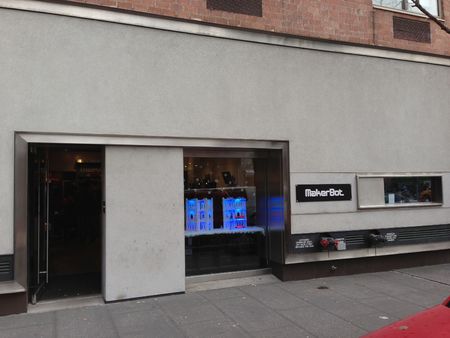Not that many years ago the personal 3D printing market was populated entirely by sales from obscure online websites, typically in kit form. At the time this type of sales approach matched the early adopters who used personal 3D printing at the time.
However, as interest increased, some manufacturers sought to increase their sales dramatically by introducing 3D printing to the mass market. This required not only publicity, but also a way for “normal” people to actually purchase the machines, too. Retail experiments took place and today we have a burgeoning 3D printer retail space. Here’s what’s going on today:
- MakerBot’s Flagship Store still exists on Mulberry Street in lower Manhattan. It was perhaps the first physical 3D printer store in the world, but then, as now, it sells (obviously) only MakerBot products.
- MCOR launched a 3D print service with Staples to provide easy 3D printing access to those without their own machines. The premise was that people would be familiar and confident in Staples because they already provide extensive 2D print services. At this time the service is offered only in Europe, but we understand they will gradually expand.
- 3D Systems also partnered with Staples, but instead of a service, they provided Staples with actual 3D printers to be sold online and in select Staples physical locations. Currently store availability is limited, but we understand more stores will be added in the future.
- The iMakr store in London offers a wide array of 3D printers from different manufacturers in a storefront scenario where passers-by may encounter replication in person.
- MakerBot has teamed with Microsoft to showcase MakerBot Replicators in Microsoft’s stores across the US, exposing their popular machines to a large audience.
- Numerous other similar independent stores have or will soon open up around the world.
We’re wondering when the first 3D print chain will emerge.


